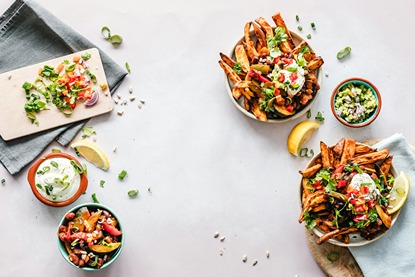Photo by Ella Olsson from Pexels/pexels
Adopting portion control is one of the simplest yet most effective ways to manage weight, improve digestion, and support long-term health. Unlike restrictive diets, portion control allows you to eat a balanced variety of foods while managing the quantities. This guide provides practical tips to help you start portion control without feeling deprived.
Steps to Begin Portion Control
Steps to Begin Portion Control
Knowing what a healthy portion looks like is the foundation of portion control. Use visual cues to estimate serving sizes: for example, a serving of protein (like chicken or tofu) should roughly be the size of your palm, while a serving of carbs (such as rice or pasta) should be about the size of your fist. Familiarizing yourself with these visual aids can help you avoid over-serving and develop an intuitive sense of how much food you need.
Choose Smaller Plates and Bowls
Switching to smaller plates tricks your mind into feeling satisfied with less food. Studies show that larger plates make servings look smaller, leading us to add more to our plates than we need. A smaller plate gives a sense of a full meal, which can be especially helpful when starting portion control. Remember, you can always go back for seconds if you’re truly hungry.
Practice Mindful Eating
Mindful eating encourages you to slow down, savor each bite, and become aware of hunger cues. Instead of rushing through meals or eating while distracted, take the time to chew thoroughly, notice flavors, and enjoy your food. When you eat slowly, you give your body time to signal fullness, reducing the chance of overeating.
Pre-Portion Snacks and Meals
Snacking from large bags or containers often leads to unintentional overeating. Try pre-portioning snacks into smaller containers or bags to control serving sizes easily. This approach also works well for meals; if you tend to over-serve, start by plating a portioned amount, and see if that’s enough before going back for more.
Establish Regular Eating Times
Setting consistent mealtimes can prevent overeating by helping to regulate your hunger hormones and prevent unnecessary snacking. When your body knows when to expect food, you’re less likely to feel sudden, intense hunger, which often leads to larger portions. Try to stick to three balanced meals and a couple of healthy snacks at regular intervals throughout the day. This structure makes it easier to practice portion control and avoid overeating.
Focus on High-Volume, Low-Calorie Foods
One of the easiest ways to feel full while controlling portions is by eating high-volume, low-calorie foods. Foods such as leafy greens, cucumbers, and tomatoes are nutrient-rich but low in calories, so they allow you to eat satisfying portions without overindulging. Additionally, high-water-content foods like soups or smoothies are excellent for keeping hunger at bay. Including these in your diet helps manage portion sizes for more calorie-dense foods.
Use Portion Control Tools
Invest in measuring cups, kitchen scales, or portion control plates as a way to ensure accurate serving sizes, especially in the beginning. Over time, these tools help establish a more intuitive sense of portion sizes, allowing you to accurately gauge servings without relying on measuring.
Benefits of Portion Control
- Supports Weight Management: Portion control helps regulate calorie intake without restrictive dieting.
- Improves Digestion: Eating smaller portions puts less stress on the digestive system, supporting gut health.
- Reduces Waste: Portion control minimizes food waste by ensuring you’re only serving what you need.
- Encourages Nutrient Balance: It allows room for a variety of food groups, supporting a well-rounded diet.
Conclusion
Incorporating portion control into your daily routine doesn’t require drastic dietary changes or restrictive eating. By simply becoming more mindful of serving sizes, using visual aids, and taking steps to slow down, you can enjoy all types of food in moderation. Whether for weight management or simply supporting long-term wellness, portion control is an effective and accessible method.
Similar FAQ
How do I start portion control without feeling hungry
Eat foods high in fiber and protein; they keep you fuller longer.
Can portion control help with weight loss
Yes, it helps manage calorie intake, which is key for weight loss.
What foods should I avoid with portion control
No food is off-limits, but balance high-calorie foods with nutrient-dense options.
Do portion sizes vary for different body types
Yes, individual needs vary; adjust portion sizes based on activity and health goals.
How can I measure portions when dining out
Visualize portions: a fist-sized serving for carbs, palm-sized for proteins.
Do portion sizes vary for different body types
Yes, individual needs vary; adjust portion sizes based on activity and health goals.

